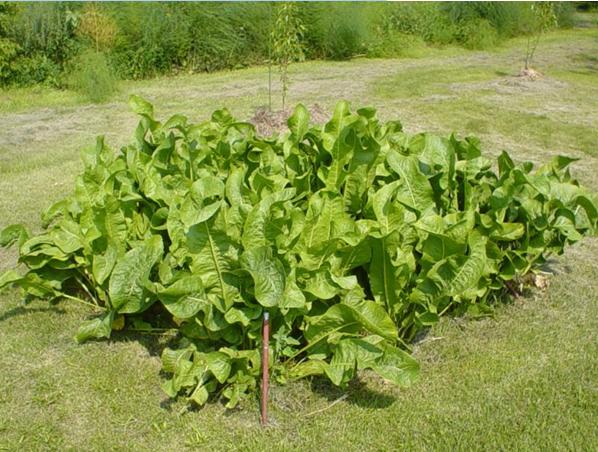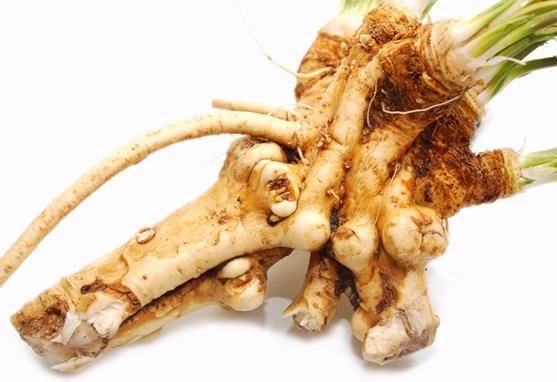Categories
Calendars
Guides
Reviews
Archive
Gallery
Articles
Ask Our Gardening Expert
Horseradish
It is recommended that it be planted in a sunken container. If left undisturbed, the roots spread underground and it has become a pest plant in many places. Not surprisingly, it is left alone by grazing animals. The roots have a powerfully pungent flavour and when finely grated, can be added to salads and used for sauces. It is regarded as a traditional accompaniment to roast beef. The young, fresh leaves can be used in salads and sandwiches. It is grown world wide, though it probably originated in south west Asia.
Horesradish, a member of the Brassica family
Cutivation
Like most plants, horseradish grows well in free draining soil, rich in organic matter. Sections of root are planted in spring to develop into full plants. The tops die back after frost when the roots are dug up. Older roots become woody and are less useful.
Dig up the roots in autumn or when needed
Pests
As a member of the cabbage family, the caterpillar of the small white butterfly is a pest. Hand-picking can be carried out from time to time. HORSERADISH QUICK GUIDE
Horseradish is a herbaceous perennial , a member of the brassica family related to mustard and wasabi. It has large, coarse leaves , thick, white fleshed roots and once established, is difficult to control. 
Propagation
As herbaceous perennials, they can be propagated by division and are rarely grown from seed.
Harvesting and storing
Use young leaves when available. Dig up roots in autumn, when the green parts have died back or as needed. It will keep for months in the refrigerator, or can be deep frozen. Eventually, the roots darken and will need to be replaced.
Latin name
Armoracia rusticana
Type
Herbaceous perennial herb
Site and Soil
Well drained soil, rich in organic matter, sunny position.
Pests
Small white butterfly